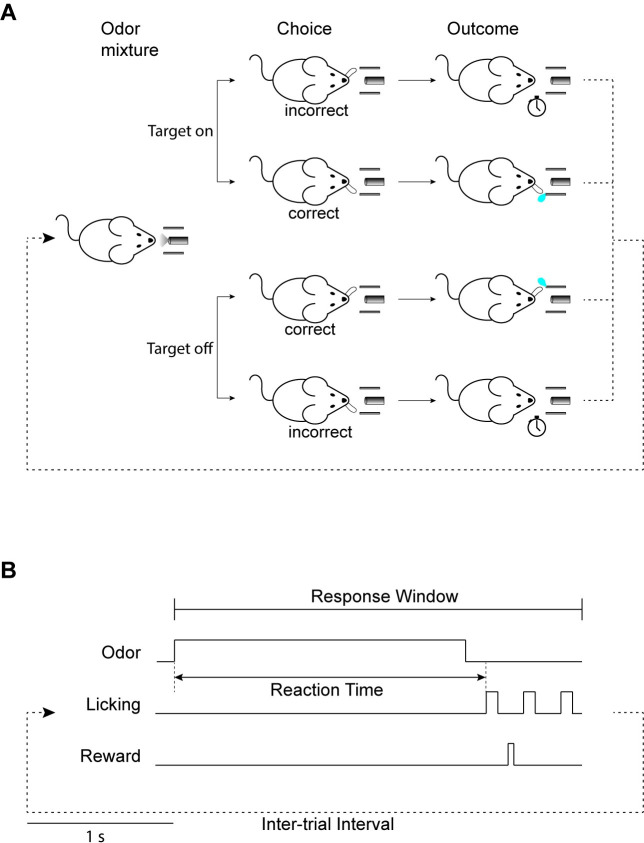Fig 1. Behavioral paradigm.
A. Mice were trained on a target detection with background task that was set as a two-alternative choice reaction time task. In each trial, mice were presented with an odorant mixture and were required to report the presence or absence of a target odorant by licking the right or left lick ports, respectively. Correct licks were rewarded with a water drop and incorrect licks were punished with a timeout. B. The temporal structure of the task. In each trial an odor mixture was presented for 2 seconds. Mice were required to report their decision by licking within a 2.8 seconds response window that begins with odor presentation. Correct licks were rewarded immediately. The inter-trial interval was 7.2 seconds following correct responses and 12.2 seconds following incorrect responses to encourage accuracy over speed. The time between odor onset and the first lick was taken as the trial’s reaction time.

